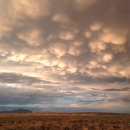Research
Understanding greater sage-grouse population trends from the lens of the WAFWA Conservation Design Strategy: implications for management of impacted, core, and growth opportunity areas within the sagebrush sagebrush
The western United States’ sagebrush country encompasses over 175 million acres of public and private lands. The sagebrush landscape provides many benefits to our rural economies and communities, and it serves as crucial habitat for a diversity of wildlife, including the iconic greater sage-grouse and over 350 other species.
Learn more about sagebrush biome
Funding Year | Amount | Location |
FY22 | $75,000 | Rangewide |
| FY23 | $75,000 | Rangewide |
Project Description
This project will directly link the sagebrush conservation design to greater sage-grouse populations. The research will provide the scientific evidence to link management actions applied under the sagebrush conservation design to the greater sage-grouse population response.
Partners
U.S. Geological Survey


